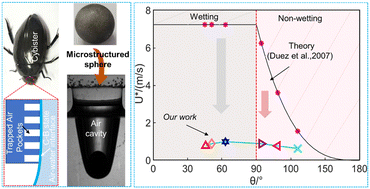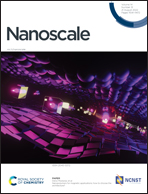Dramatically reducing the critical velocity of air cavity generation via biomimetic microstructure effects†
Abstract
Control over the generation of air cavities in liquids is vitally important in numerous underwater marine systems, with behaviors ranging from largely reducing the fluid resistance to minimizing the energy consumption. However, reducing the critical velocity of air cavity generation simultaneously on both original and hydrophobic materials can be mutually exclusive. In strong contrast to the view that the surface wettability is what determines the critical velocity of air cavity entrainment, we report a facile method to dramatically reduce the critical velocity of air cavity generation by etching a kind of biomimetic microstructure on the sphere surface. It is worth noting that the generation of air cavities induced by the microstructure effect is almost independent of surface wettability; even for the hydrophilic spheres, the critical velocity of air cavity generation is reduced by over 86.3%. The physical mechanism is mainly related to the pinning of the moving contact line and the regulable transition of the wetting state from the Wenzel model to the Cassie–Baxter model at the solid–liquid–air interface. We also investigated the stability of the microstructured spheres to induce underwater air cavities and found that a continuous and robust air cavity could still be produced even after 1200 repeated impacts. This research provides a simple, economical and energy-efficient method for minimizing the critical velocity for generating air cavity entrainment to reduce hydrodynamic drag.



 Please wait while we load your content...
Please wait while we load your content...